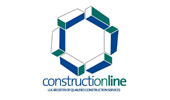Screed Definition
What Is The Screed Definition?
I’m Andy Parkin, Managing Director of the Multi-Award Winning Speed Screed. I’m here to talk about the screed definition?
Screed Definition:
“Screed is a combination of sharp sand and cement which is placed on top of a concrete base to provide a strong, stable, smooth surface on which a final floor layer can be placed”.
Screed is applied to a concrete slab either directly or on top of damp proofing membrane and/or insulation layers. It is one of the best materials when considering a covering for underfloor heating systems.
The aim of screed is that it will form a smooth and flat surface that other flooring can be laid on top of – anything ranging from vinyl, carpet and laminate to floorboards can be used. The screed can make sure that the surface is completely level.
There is a difference between screed and concrete
Concrete is a lot coarser than screed because, although they both use the same ingredients, the aggregate used with concrete is larger. Concrete aims to provide strength; screed provides a smooth top surface layer.
The screed can be bonded directly on top of the concrete base or it can be separated from the base by a membrane (unbonded) or insulation layer (floating). It must be applied at a minimum thickness which depends on how much traffic the area will see. Heavier traffic areas such as industrial, commercial, health care and other settings will need a thicker screed. For domestic areas, you would normally need around 25mm thickness for bonded screed or 65mm for unbonded or if used in underfloor heating systems. It is always important to establish what the purpose of the screed is and where it is located before application.
Reinforced screeds come with polypropylene fibres for extra strength or you can opt for a metal or glass mesh. These work well in areas of high traffic and also lend an element of flexibility which can help reduce the risks of the screed curling and cracking as it dries.
Key Screed Definitions
Bonded – laid directly against the concrete slab. This requires making the surface of the concrete rough and using a bonding agent to increase the reliability of the bond.
Unbonded – laid on top of a PVC membrane. This can be reinforced, self-levelling or other types of screed depending on the use of the area.
Floating – the screed ‘floats’ on an acoustic or thermal layer. Useful for underfloor heating systems.
Reinforced screed – comes with polypropylene fibres to increase strength. Ordinary screed over a metal mesh is also considered reinforced.
Wearing screed – can be used as a flooring without having to add a specific flooring layer like carpet or tiling.
For more information about the screed definition please get in touch. At Speed Screed we have years of experience that we are more than happy to share to make sure you choose the very best screed for your project. We love to help!
Our Accreditations
About Speed Screed
Speed Screed Limited was founded on the key principle of providing first-class customer service. It has since built itself an impressive reputation for delivering high-quality projects across the United Kingdom.
The company’s success is built on its belief in quality work, attention to detail, on-time completion, strong working partnerships and the recruitment of top-level staff. about us >








